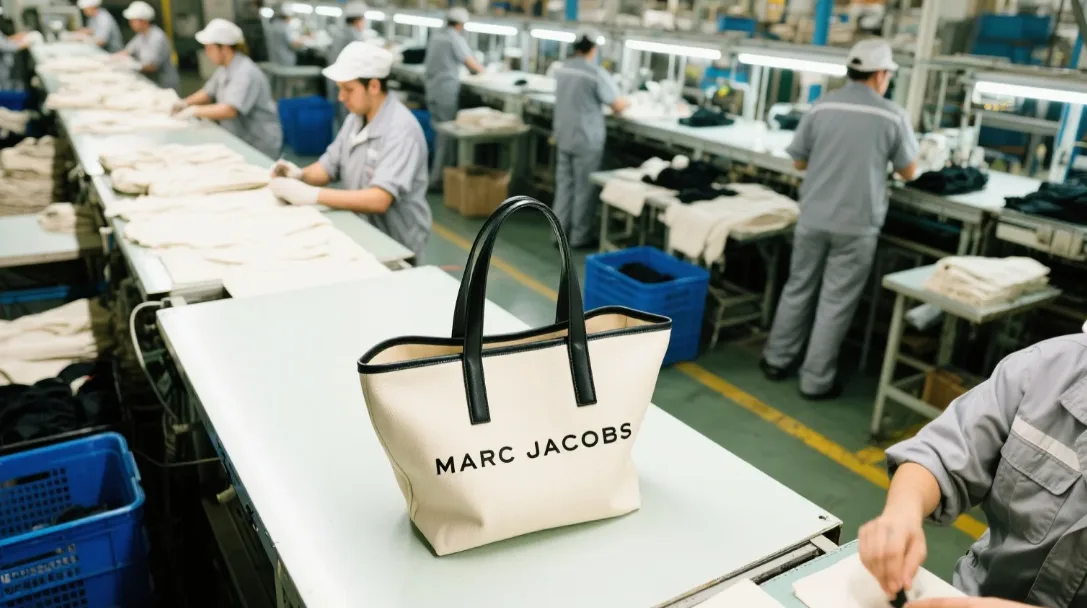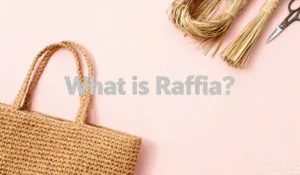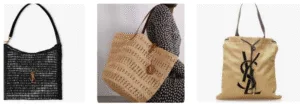Marc Jacobs is a contemporary luxury brand under the LVMH Group, renowned for its bold, avant-garde designs and distinctive fashion identity. Founded in 1984 by American designer Marc Jacobs, the brand initially gained recognition for its ready-to-wear collections before expanding into handbags, accessories, footwear, and fragrances, solidifying its status as a key player in the global fashion industry.
Positioned as an affordable luxury tote bag brand, Marc Jacobs strikes a balance between high-end sophistication and youthful appeal, making it particularly popular among millennials and Gen Z consumers. While LVMH’s elite brands (such as Louis Vuitton and Dior) cater to ultra-luxury markets, Marc Jacobs occupies the premium contemporary segment with relatively accessible pricing.
In terms of bag production, the brand follows the globalized manufacturing model common in the luxury sector, outsourcing certain product lines to specialized manufacturers to maintain quality while optimizing costs. For instance, its American tote bag brand segment—including iconic designs like The Snapshot and The Tote Bag—may be produced in collaboration with expert leather workshops in Italy, France, or Asia, while ready-to-wear collections are often manufactured in Europe or North America. This approach ensures craftsmanship excellence while enhancing supply chain efficiency.
Contents
The Role of Chinese Manufacturing in Marc Jacobs’ Supply Chain
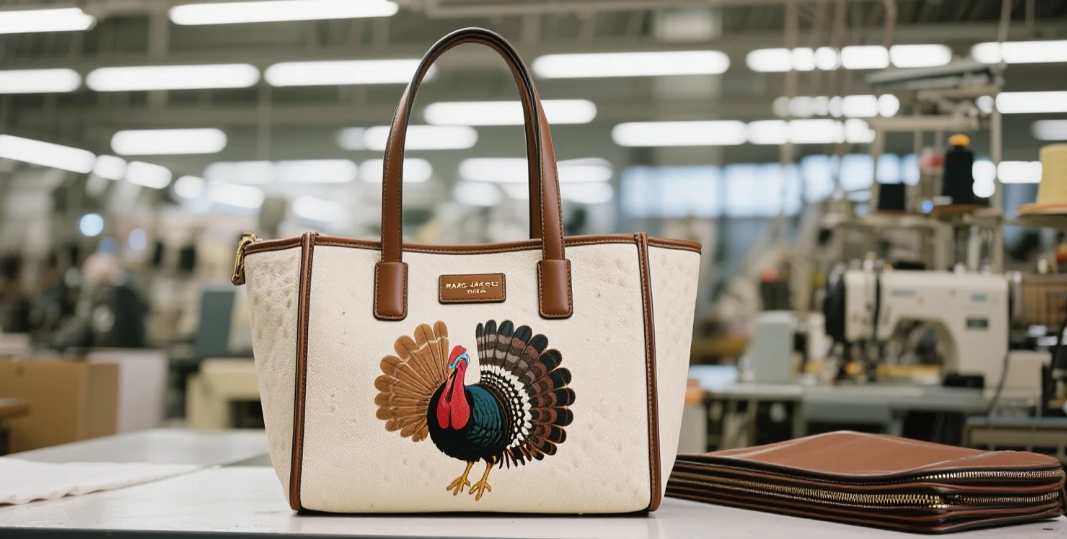
As a vital link in the global contemporary luxury supply chain, China plays a pivotal role in Marc Jacobs’ production system. A portion of the brand’s handbag products—particularly diffusion lines like “The Marc Jacobs”—are manufactured in high-end leather goods factories in China, with labels clearly marked “Made in China.” This strategy reflects luxury brands’ recognition of China’s mature craftsmanship and efficient production capacity. Chinese manufacturers have achieved world-class expertise in leather processing, hardware accessories, and stitching techniques, meeting Marc Jacobs’ stringent quality requirements for product details.
Notably, Chinese manufacturing primarily focuses on the brand’s entry-level product lines (such as canvas totes and small leather goods), while core high-end collections remain predominantly produced in Italian or French ateliers. This tiered production strategy helps maintain the exclusivity narrative of luxury goods while leveraging China’s cost advantages to expand profit margins in the accessible luxury market. From a consumer perspective, Marc Jacobs bags made in China offer more competitive pricing (approximately 20%-30% lower than European-made counterparts), successfully attracting price-sensitive younger consumers in emerging markets.
Industry data highlights China’s exceptional production flexibility for Marc Jacobs tote bag manufacturer: during major e-commerce sales seasons (e.g., Singles’ Day, Black Friday), Chinese suppliers can rapidly respond to sudden order surges, reducing lead times by over 40% compared to European production. This agility is gradually reshaping the traditional luxury industry’s perception of “Made in China,” prompting more brands to reassess their global production allocation strategies.
Italy: The Gold Standard of Leather Tote Bag Craftsmanship

As the holy grail of luxury leather goods, Marc Jacobs entrusts its high-end collections to century-old ateliers in Italy’s Tuscany and Veneto regions. These multi-generational workshops employ time-honored techniques like saddle stitching and vegetable-tanned leather processing, with each bag undergoing 18-22 meticulous steps. The leather selection alone has a 40% rejection rate. For limited editions, Italian artisans revive near-extinct techniques like Venetian embossing or Florentine metal filigree, transforming $3000+ statement pieces into collectible artworks. The Spring-Summer 2023 Archivio tote exemplifies this “slow luxury” approach – requiring 72 working days from raw material to final inspection, versus 15 days average in Chinese factories.
• Multi-generational craftsmanship: Employing time-honored techniques like saddle stitching and vegetable-tanned leather processing
• Rigorous production standards: Each bag undergoes 18-22 meticulous steps with a 40% leather rejection rate
• Heritage techniques revived: Limited editions feature near-extinct methods like Venetian embossing and Florentine metal filigree
• Investment-worthy creations: $3000+ pieces transformed into collectible artworks through painstaking craftsmanship
Turkey:the Ideal Hub for Marc Jacobs Tote Bag Production
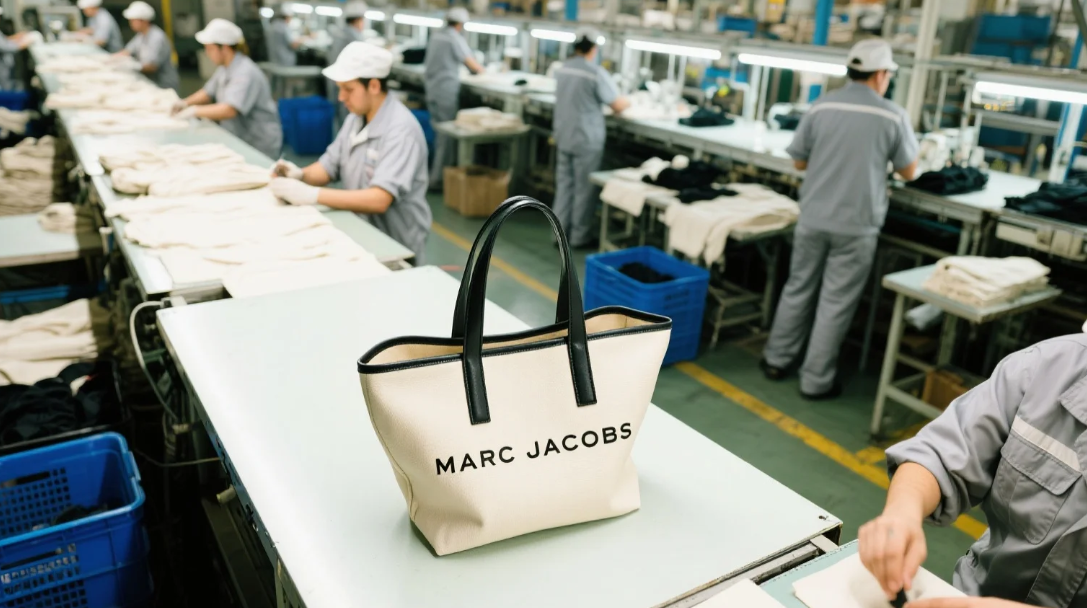
Turkey’s vertically integrated leather industry, cost efficiency, and strategic trade advantages make it the ideal hub for manufacturing Marc Jacobs tote bags, combining Italian-tier craftsmanship with emerging-market costs, zero EU tariffs, and AI-optimized production. The country’s concentrated leather cluster in Çorlu and Beykoz (near Istanbul) houses tanneries, accessory makers, and finished goods producers within a <50 km radius, enabling ultra-fast material turnover (<72 hours from raw hide to cut leather) while leveraging decades of luxury leather expertise for premium hand-stitching and finishing. Cost competitiveness is unmatched—skilled artisans earn €800/month (vs. Italy’s €2,500), industrial electricity costs €0.12/kWh (half of Italy’s rate), and solar-powered drying further reduces energy costs.
Technology integration:
Traditional craftsmanship: Using the vegetable tanning technology of the Ottoman period (such as tanning with oak bark), the leather softness is increased by 40%
Modern equipment: Introducing the German Durkopp Adler automatic cutting system, achieving a cutting efficiency of 1 hour/200 pieces of leather, with an error of <0.5mm
Critically, Turkey’s EU Customs Union status eliminates the 17% tariff applied to Chinese imports (HS 4202.91), while 3-day ground shipping to Germany and 22%-cheaper air freight (via Turkish Airlines’ dedicated Milan flights) ensure rapid EU delivery. Production agility is enhanced by AI-driven quality control (cutting defects from 5% to 1.2%), modular assembly lines (boosting output from 500 to 1,200 bags/day),and digital leather printing technology enabling 3-day turnaround for limited-edition designs. With bonded warehousing enabling 48-hour EU fulfillment, Turkey offers high-margin, fast-turnaround production tailored to luxury demand—making it the optimal choice for Marc Jacobs’ tote bag supply chain.
Through the above measures, Marc Jacobs’ annual tote bag production capacity in Turkey can be increased from the current 150,000 pieces to 400,000 pieces, while maintaining a gross profit margin of more than 65% (the industry average is 58%). The key success factor lies in the deep integration of Turkey’s “Craft Democracy” ecosystem – seamlessly connecting artisan workshops with the Industry 4.0 system.
Choosing the Right Manufacturer: Custom Tote Bags & Marc Jacobs Tote Production Hubs

China, Italy, and Turkey are leading destinations for custom tote bag production, each offering unique advantages for brands like Marc Jacobs tote bag manufacturer partners. China dominates mass production with cost-efficient labor and high-volume capabilities, making it ideal for affordable, large-order custom designs. Italy specializes in premium craftsmanship, catering to luxury tote bags with intricate detailing and high-end materials—perfect for Marc Jacobs‘ mainline collections. Turkey strikes a balance, offering mid-range quality with faster turnaround times, suitable for trend-driven or seasonal tote bag lines.
Key Factors Influencing Production Choices
1. Cost Efficiency – China remains the top choice for custom tote bags requiring bulk orders at competitive prices, helping brands maximize margins.
2. Craftsmanship & Quality – For Marc Jacobs’ signature high-end totes, Italian manufacturers ensure superior stitching, leatherwork, and exclusive finishes.
3. Brand Strategy & Flexibility – Diffusion lines (like Marc Jacobs’ Snapshot bags) may use Turkish or Chinese factories for quicker production cycles while maintaining quality.
Optimizing Tote Bag Manufacturing for Brand Success
By strategically selecting between China (cost), Italy (luxury), and Turkey (speed + mid-tier quality), brands can align production with market demands. Whether producing custom tote bags for retail or exclusive Marc Jacobs designer pieces, the right manufacturer enhances both profitability and brand prestige.
Summary
The production layout of Marc Jacobs handbags follows the global manufacturing strategy of luxury brands, selecting optimal production regions based on product line positioning. High-end collections such as limited editions and mainline handbags are primarily crafted in Italy, leveraging centuries-old Tuscan leather craftsmanship to guarantee exceptional quality and collectible value. Entry-level products like custom tote bags and secondary lines are produced in high-end Chinese leather factories, balancing precision and cost efficiency—priced 20%-30% lower than European-made equivalents. Mid-range and seasonal styles are manufactured in Turkey, capitalizing on EU tariff advantages, rapid supply chains, and Industry 4.0 technology to achieve 40% faster delivery than European production. This tiered system preserves the brand’s luxury prestige while expanding market reach through strategic partnerships in China and Turkey, reflecting the modern luxury industry’s “design-led, global collaboration” supply chain trend.
Looking for a Marc Jacobs tote bag manufacturer? Sunteam delivers end-to-end solutions—from premium leather processing to large-scale production. Our facilities meet international luxury standards while harnessing the efficiency of the Chinese supply chain, ensuring high-quality, market-competitive products. Contact Sunteam today for tailored custom tote bag production!

